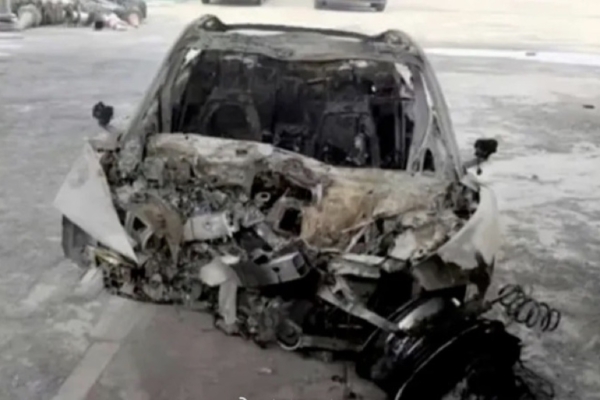During the “May Day” holiday, more than ten car manufacturers in mainland China offered price discounts, including zero-interest car loans, increased subsidies, and gifts of household appliances as part of their promotional campaigns. The buzzword “smart driving” is gradually fading out as the core marketing term for these car companies. On May 4th, Xiaomi adjusted the wording on the order page for the SU7 new car, renaming “Smart Driving” to “Assisted Driving”.
On May 5th, companies like Li Xiang, Xiaomi, NIO, Arcfox, and Xiaopeng gradually toned down their related promotional content when introducing their products. Xiaomi adjusted the wording on the SU7 new car ordering page, renaming “Smart Driving” to “Assisted Driving”. The Xiaomi SU7 Standard Edition featuring Xiaomi Pilot Pro was changed from “Xiaomi Smart Drive Pro” to “Xiaomi Assisted Drive Pro”; and the Xiaomi SU7 Pro and Xiaomi SU7 Max with Xiaomi HAD were renamed from “Xiaomi Smart Drive Max” to “Xiaomi End-to-End Assisted Driving”.
This shift in terminology is a response to a sudden accident involving the Xiaomi car SU7 in March this year, which resulted in the death of three people. There has been ongoing public controversy over the “smart driving” functionality.
The accident took place on March 29th when three female university students were driving from Hubei to Anhui’s Chizhou for an exam the following day. One of the girls’ boyfriends had bought her this Xiaomi SU7 car, which she had previously driven from Hubei to Guangdong. On the evening of the 29th, they activated the NOA smart assisted driving feature while driving on the highway and encountered construction work on the Anhui Tongling Dexigao Highway Chiqi section, forcing them to switch to the opposite lane. Approximately 64 meters away from the obstacle, NOA issued a risk alert, but the vehicle failed to trigger the AEB emergency braking. Even after the girl took control of the steering wheel, the vehicle still crashed into a cement guardrail.
The collision caused the vehicle to catch fire, and it appeared that the doors could not be opened from the inside. That night, all three university students perished in the flames. The incident sparked heated discussions on social media, with relatives of the victims questioning whether the accident was caused by the vehicle catching fire on its own and expressing concerns about the safety of smart driving technology.
According to reports by mainland Chinese media and research by The Epoch Times, a total of 72 cases of new energy vehicle fires occurred in 2020; approximately 3,000 cases in 2021; the first quarter of 2022 saw a total of 640 fire incidents; more than 2,100 cases in 2023; about 550 cases in 2024; and up to March 22, 2025, there have been 217 cases of self-ignition incidents involving new energy vehicles in China from January to March, representing a staggering 380% increase compared to the previous year.
A resident, using the alias Wang Lin, told The Epoch Times, “New energy vehicles are not as reliable as traditional gasoline cars, the charging time is too long, and it’s common to see long queues for charging stations on highways. The charging infrastructure has not kept pace. There have been many incidents in recent years where people couldn’t escape because the doors couldn’t be opened and tragically died in the flames. Some vehicles even caught fire during charging, and there was no way to save them. These are the shortcomings of new energy vehicles, and it feels like safety is not guaranteed.”
Autonomous driving refers to the ability of vehicles to operate independently without human intervention through artificial intelligence, sensors, and other technologies. Autonomous driving cars rely on technologies such as artificial intelligence, computer vision, radar, monitoring devices, and GPS working together to allow the computer to operate the vehicle safely without any human actions.
During the “May Day” holiday, 11 car manufacturers in China engaged in fierce price wars, offering special car purchase benefits or limited-time May car purchase benefits, including fixed-price deals, cash subsidies, manufacturers’ additional trade-in subsidies, 5-year zero-interest car loans, and giveaways of household appliances. Geely Auto offered the highest comprehensive car purchase subsidy of up to 53,000 yuan. Local governments in cities like Shenzhen also introduced new policies to support car manufacturers in promoting their vehicles.
A Tesla store in Shenzhen introduced the Model Y full series “5-year zero-interest” promotion for the first time. NIO sales staff stated that purchasing the “LeDao L60” during the “May Day” period comes with a 52-liter in-car family refrigerator, 5-year assisted driving system, and an additional 4,000 yuan subsidy.
Geely Auto launched “May Day” limited-time benefits, where purchasing a car between April 29th and May 5th can receive comprehensive subsidies of up to 53,000 yuan.
Xiaomi Auto introduced May limited-time car purchase benefits from May 1st to May 31st, allowing customers who order the Xiaomi SU7 during this period to enjoy an 8,000 yuan Nappa leather seat and a lifetime free access to Xiaomi’s assisted driving system.
The Shenzhen Municipal Bureau of Commerce and other departments have issued statements supporting the exchange of old cars for new ones, providing subsidies ranging from 15,000 to 20,000 yuan. Despite the various “creative price cuts” by major car manufacturers, the sales volume of automobiles is still gradually declining.

